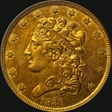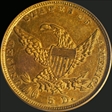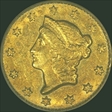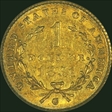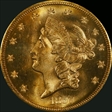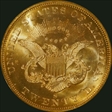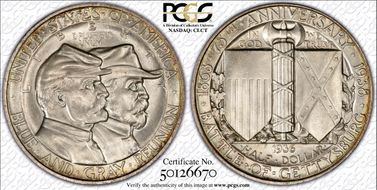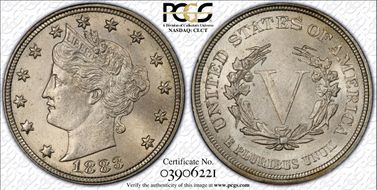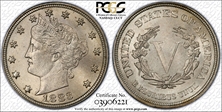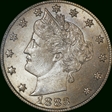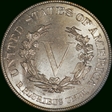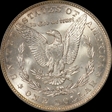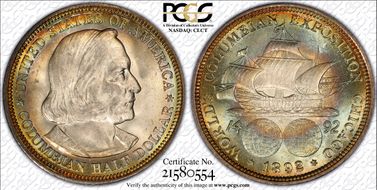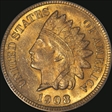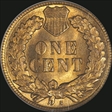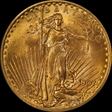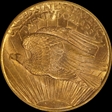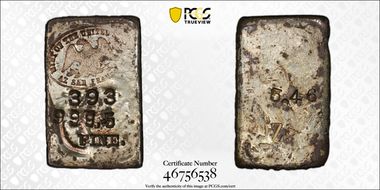Overland Trail Treasures 的展示图片库
Otherwise known as the "Pillar Dollar" or "Piece of Eight", this coin is the forerunner of the U. S. silver dollar. Before the Mint Act of 1792, the dollar value referenced in the Constitution is of the Spanish Milled Dollar. The coin remained legal tender until 1857 in the U. S. and circulated freely throughout the Americas. This piece was minted in Mexico City while Ferdinand VI ruled Spain.
Otherwise known as the "Pillar Dollar" or "Piece of Eight", this coin is the forerunner of the U. S. silver dollar. Before the Mint Act of 1792, the dollar value referenced in the Constitution is of the Spanish Milled Dollar. The coin remained legal tender until 1857 in the U. S. and circulated freely throughout the Americas. This piece was minted in Mexico City while Ferdinand VI ruled Spain.
Before the establishment of federal mints at Charlotte and Dahlonega miners were left with the choice making the treacherous journey to the Philadelphia Mint or turning their gold dust and nuggets over to local goldmongers . Private minters like the Bechtler's took the place of these goldmongers and smelted ore into gold coins at a fair price. Their mintage in one-dollar, quarter-eagle, and half-eagle denominations were accepted in local commerce transaction sometimes in favor of the rare federal coinages. The Bechtler family minting operation lasted from 1830 into the early 1850's when the Charlotte mint brought about their demise.
Before the establishment of federal mints at Charlotte and Dahlonega miners were left with the choice making the treacherous journey to the Philadelphia Mint or turning their gold dust and nuggets over to local goldmongers . Private minters like the Bechtler's took the place of these goldmongers and smelted ore into gold coins at a fair price. Their mintage in one-dollar, quarter-eagle, and half-eagle denominations were accepted in local commerce transaction sometimes in favor of the rare federal coinages. The Bechtler family minting operation lasted from 1830 into the early 1850's when the Charlotte mint brought about their demise.
Mintage 20,583. Classic Half Eagle. Gold fever hit the country in the late 1820's as the yellow metal was discovered in Georgia and North Carolina. The gold rush that ensued triggered the establishment of federal branch mints at Charlotte, NC and Dahlonega, GA. The 1838 Classic half eagle was the first coin produced at the frontier Dahlonega Mint. This coin exhibits beautiful golden tone, semiprooflike surfaces, and fantastic eye appeal. From the North Georgia Collection
Mintage 20,583. Classic Half Eagle. Gold fever hit the country in the late 1820's as the yellow metal was discovered in Georgia and North Carolina. The gold rush that ensued triggered the establishment of federal branch mints at Charlotte, NC and Dahlonega, GA. The 1838 Classic half eagle was the first coin produced at the frontier Dahlonega Mint. This coin exhibits beautiful golden tone, semiprooflike surfaces, and fantastic eye appeal. From the North Georgia Collection
The California Gold rush and private minters like the Betchler's pressured Congress to adopt a new denomination, the gold dollar. The gold dollar was first produced in 1849 at all four mints, Philadelphia, New Orleans, Dahlonega, and Charlotte. This coin minted at the Charlotte Mint has beautiful golden toning and nice strike.
The California Gold rush and private minters like the Betchler's pressured Congress to adopt a new denomination, the gold dollar. The gold dollar was first produced in 1849 at all four mints, Philadelphia, New Orleans, Dahlonega, and Charlotte. This coin minted at the Charlotte Mint has beautiful golden toning and nice strike.
The loss of California gold with the sinking of the S.S. Central America in part caused the panic of '57. Gold dust, ingots, and freshly minted coins from the goldfields of California were shipped for a voyage around Cape Horn to banks on the East coast. The S.S Central America went down in a storm after passengers and crew were rescued. The gold, however, went down with the ship into the Atlantic. This coin was salvaged from crates of newly minted coins not affected by seawater. Many of the specimens look today as if they were minted yesterday. A mint-made die line through the lower left shield border lends the Spiked Shield nickname. Well struck and lustrous with a splendid reverse and a carefully preserved obverse. This lot is accompanied by Certificate of Authenticity S.S.C.A. #2153, signed by Tommy Thompson of the Columbus-America Discovery Group. Also included is the presentation box and faux book of issue, the latter inscribed to the Jayne Family.(#70000) (Registry values: P2)
The loss of California gold with the sinking of the S.S. Central America in part caused the panic of '57. Gold dust, ingots, and freshly minted coins from the goldfields of California were shipped for a voyage around Cape Horn to banks on the East coast. The S.S Central America went down in a storm after passengers and crew were rescued. The gold, however, went down with the ship into the Atlantic. This coin was salvaged from crates of newly minted coins not affected by seawater. Many of the specimens look today as if they were minted yesterday. A mint-made die line through the lower left shield border lends the Spiked Shield nickname. Well struck and lustrous with a splendid reverse and a carefully preserved obverse. This lot is accompanied by Certificate of Authenticity S.S.C.A. #2153, signed by Tommy Thompson of the Columbus-America Discovery Group. Also included is the presentation box and faux book of issue, the latter inscribed to the Jayne Family.(#70000) (Registry values: P2)
The "War of Northern Aggression" ripped the country apart, turning with the Union victory at Gettysburg, and culminating with Lee's surender at Appomattox, Va. Seventy-Five years after the Confederate loss at Gettysburg the Blue and Gray Reunion was held. In conjuction with that celebration Battle of Gettysburg half dollars were minted. This example has sensational golden peripheral toning and nearly flawless reverse.
The "War of Northern Aggression" ripped the country apart, turning with the Union victory at Gettysburg, and culminating with Lee's surender at Appomattox, Va. Seventy-Five years after the Confederate loss at Gettysburg the Blue and Gray Reunion was held. In conjuction with that celebration Battle of Gettysburg half dollars were minted. This example has sensational golden peripheral toning and nearly flawless reverse.
The "War of Northern Aggression" ripped the country apart, turning with the Union victory at Gettysburg, and culminating with Lee's surender at Appomattox, Va. Seventy-Five years after the Confederate loss at Gettysburg the Blue and Gray Reunion was held. In conjuction with that celebration Battle of Gettysburg half dollars were minted. This example has sensational golden peripheral toning and nearly flawless reverse.
The "War of Northern Aggression" ripped the country apart, turning with the Union victory at Gettysburg, and culminating with Lee's surender at Appomattox, Va. Seventy-Five years after the Confederate loss at Gettysburg the Blue and Gray Reunion was held. In conjuction with that celebration Battle of Gettysburg half dollars were minted. This example has sensational golden peripheral toning and nearly flawless reverse.
The redesigning of the five cent piece in 1883 was another collossal blunder by the mint's engraving staff. The "NO CENTS", "Racketter Nickel" variety depicted here was widely gold plated and passed as a gold half eagle. This specimen is from the famed Eliasberg Collection.
The redesigning of the five cent piece in 1883 was another collossal blunder by the mint's engraving staff. The "NO CENTS", "Racketter Nickel" variety depicted here was widely gold plated and passed as a gold half eagle. This specimen is from the famed Eliasberg Collection.
The redesigning of the five cent piece in 1883 was another collossal blunder by the mint's engraving staff. The "NO CENTS", "Racketter Nickel" variety depicted here was widely gold plated and passed as a gold half eagle. This specimen is from the famed Eliasberg Collection.
The redesigning of the five cent piece in 1883 was another collossal blunder by the mint's engraving staff. The "NO CENTS", "Racketter Nickel" variety depicted here was widely gold plated and passed as a gold half eagle. This specimen is from the famed Eliasberg Collection.
Exquisite rainbow toning adorns the obverse of this so called "Daddy Dollar". Despised for decades this original toning is the result of bag storage at the mint or various depositories.
Exquisite rainbow toning adorns the obverse of this so called "Daddy Dollar". Despised for decades this original toning is the result of bag storage at the mint or various depositories.
The 400th anniversary of the Columbus landing was the event for the minting of our first commemorative coin. The coin issued in 1892 for the Columbian Exposition in Chicago, IL., was coined in proof as well as business strikes as NCLT. This specimen has vivid bullseye toning of russet, yellow, blue and green fading to a lustrous white center. Outstanding eye appeal with tremendous flash. A unique piece.
The 400th anniversary of the Columbus landing was the event for the minting of our first commemorative coin. The coin issued in 1892 for the Columbian Exposition in Chicago, IL., was coined in proof as well as business strikes as NCLT. This specimen has vivid bullseye toning of russet, yellow, blue and green fading to a lustrous white center. Outstanding eye appeal with tremendous flash. A unique piece.
The 400th anniversary of the Columbus landing was the event for the minting of our first commemorative coin. The coin issued in 1892 for the Columbian Exposition in Chicago, IL., was coined in proof as well as business strikes as NCLT. This specimen has vivid bullseye toning of russet, yellow, blue and green fading to a lustrous white center. Outstanding eye appeal with tremendous flash. A unique piece.
The 400th anniversary of the Columbus landing was the event for the minting of our first commemorative coin. The coin issued in 1892 for the Columbian Exposition in Chicago, IL., was coined in proof as well as business strikes as NCLT. This specimen has vivid bullseye toning of russet, yellow, blue and green fading to a lustrous white center. Outstanding eye appeal with tremendous flash. A unique piece.
First cent struck at a branch mint. The "S" mint mark was added to the reverse of this beautiful, red and lustrous example. It looks just like it was minted yesterday.
First cent struck at a branch mint. The "S" mint mark was added to the reverse of this beautiful, red and lustrous example. It looks just like it was minted yesterday.
After describing current U. S. coinage being of "atrocious hideousness", Theodore Roosevelt commissioned Augustus St. Gaudens to redesign all U.S. coinage. St. Gaudens before succumbing to cancer, sculpted this double-eagle masterpiece considered by many, the acme of American coinage. What else is there to say.
After describing current U. S. coinage being of "atrocious hideousness", Theodore Roosevelt commissioned Augustus St. Gaudens to redesign all U.S. coinage. St. Gaudens before succumbing to cancer, sculpted this double-eagle masterpiece considered by many, the acme of American coinage. What else is there to say.
During a short period of time in the 1930's assay ingots were made at the San Francisco Mint. Many of them were made of silver and weighed around 5 ounces. This example #393, weighs 5.46 oz. of 999.5 fine silver. The seal of the San Francisco is stamped into the ingot with the inscription "Mint of the United States at San Francisco.
During a short period of time in the 1930's assay ingots were made at the San Francisco Mint. Many of them were made of silver and weighed around 5 ounces. This example #393, weighs 5.46 oz. of 999.5 fine silver. The seal of the San Francisco is stamped into the ingot with the inscription "Mint of the United States at San Francisco.
During a short period of time in the 1930's assay ingots were made at the San Francisco Mint. Many of them were made of silver and weighed around 5 ounces. This example #393, weighs 5.46 oz. of 999.5 fine silver. The seal of the San Francisco is stamped into the ingot with the inscription "Mint of the United States at San Francisco.
During a short period of time in the 1930's assay ingots were made at the San Francisco Mint. Many of them were made of silver and weighed around 5 ounces. This example #393, weighs 5.46 oz. of 999.5 fine silver. The seal of the San Francisco is stamped into the ingot with the inscription "Mint of the United States at San Francisco.
























